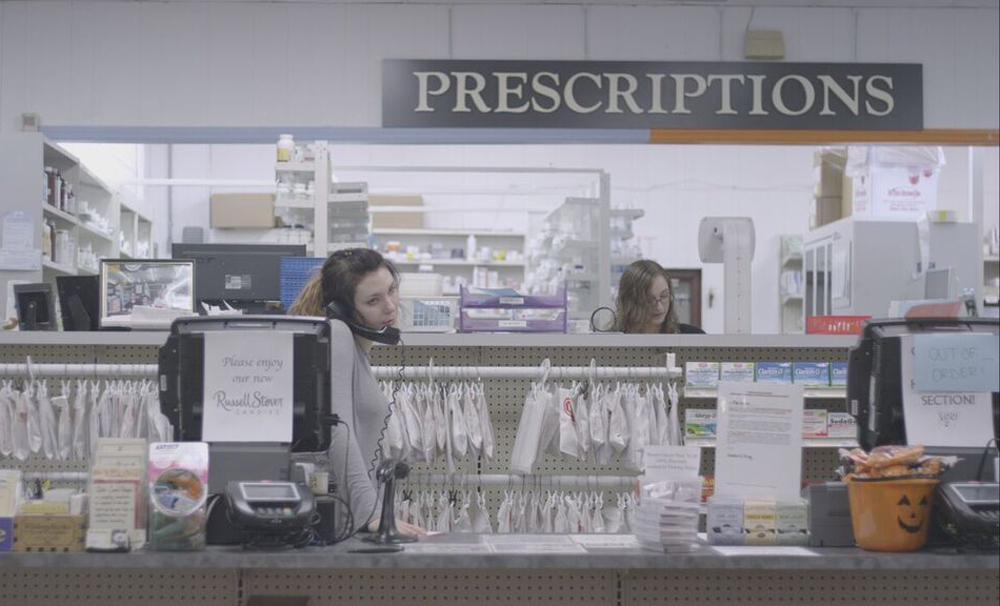Eve Marson was over at the house of Nilse Quercia, the ex-wife of Dr. William Hurwitz, when her ears perked. In making the film “Dr. Feelgood: Healer or Feeler?” she had heard plenty of stories about the Virginia-based physician who had lost his license to practice and received a 25-year sentence for drug trafficking in prescribing painkillers to his patients that didn’t adhere to professional guidelines, but rather experimenting with titration where he could adjust the dosage based on what effects he could see in his patients over time. There were those who praised the doctor and those who blamed him for getting addicted to the pills, so finding the middle ground had been tough to come by, but when Marson, in her directorial debut after being a producer on Stephanie Soechtig’s 2014 documentary “Fed Up,” on the food industry’s complicity in raising American obesity levels, heard Quercia begin to compare her former spouse to the overly trusting Gimpel the Fool of Isaac Bashevis Singer’s fable, she recognized the context she needed to tell the whole story.
“Whenever you’re doing interviews, you’re trying to key into those moments or those stories that really bring the whole film together and I really do think that’s one of them,” says Marson, who subsequently got Dr. Hurwitz, who was released from prison after serving five years of his sentence, to tell the story himself for the film. “His wife sees Dr. Hurwitz in this parable, so he tells us the story of a man who’s overly gullible or overly trusting of people around him and it gets him into some trouble and he decides not to seek revenge, but to accept that he’ll do good even if others don’t.”
Having the story to illustrate such a complicated character as Dr. Hurwitz is just one of the ways Marson is able to handle the many dichotomies presented by “Dr. Feelgood,” a film that ably reflects America’s own conundrum in addressing prescription drug use and abuse through chronicling Dr. Hurwitz’s downfall. Although the events depicted in the film occurred over a decade ago, Marson demonstrates time and again the legal and ethical issues that have only grown around pain meds since Hurwitz was initially convicted in 2004, not to mention the personal toll that can be seen simply in visiting the doctor’s former patients across the country. As the film, which premiered this summer at the Los Angeles Film Festival, begins to make its own way across the US beginning with a theatrical run in New York this week, Marson spoke about moving from producing to directing, tackling such a thorny subject matter and keeping up with an issue that seems to only grow in relevance by the day.
This issue of the opioid epidemic was something that I had been aware of and talked about with close friends who were doctors in San Francisco. They were telling me, “This is something we see every day on the job” and were just shocked at the number of patients that come in, already addicted to these pills that are ruining their lives. We talked about the extent of the epidemic, but I felt that there was already a good amount of media coverage looking at big pharma and oxycontin. Only when I read a story of a doctor who had been accused of overprescribing the pills, but his case wasn’t totally clear cut — he wasn’t out for money or any kind of malicious intent — I thought that was interesting, and maybe there’s a movie here showing the issue from the perspective of the doctor because they are really in a tricky position on this one. Of course, as a doctor, you want to relieve your patient’s suffering and these pills really do that extraordinarily well. On the other hand, how can you do that while being careful not to create addiction?
Was Dr. Hurwitz and/or the patients you spoke to immediately receptive to this or were they reluctant to rehash the past?
We were fortunate that my producer, it turned out, had a personal connection to [Dr. Hurwitz’s] defense lawyer Larry Robbins, so he introduced us to Dr. Hurwitz, who was actually very happy to speak with us. I think from his perspective, he feels like he has nothing to hide, so he thought this was a great opportunity to get his story out. He was super open and introduced us to a number of his patients as well as his family and to his former co-workers. Of course, some of the patients who weren’t as happy with him and tell a different side of the story we accessed in different ways, mostly from the prosecuting attorneys.
Was it challenging to balance the patients’ individual stories against the larger story of opioid addiction?
The thrust of the film was always to tell Dr. Hurwitz’s story – to have it be a character piece to look at the dilemmas in front of him, but as we were making the film, this epidemic of opioid addiction, particularly heroin addiction, was continuing to skyrocket. Even though I was starting at a place of not wanting to tell that usual news story, it became more and more imperative to include it because there were pieces [of this story] that felt important to educate the population on, including going back to some of the backstory of the mid-‘90s of how did these pills become so prevalent? How did Purdue [Pharma] market them? And why did doctors start to use them? Right as we were finishing, new federal guidelines came out and the heroin addiction was blossoming, so it was a matter of incorporating those latest developments as we were going, which we couldn’t have predicted.

That’s a challenge in a documentary and there was some archival, but not enough to really bring the whole thing to life, so we went back and forth a lot on that. I ended up surprising myself a lot by doing these recreations, but I think they work because the idea was to put the audience in the perspective of these different players in the film and as each of the different characters in the film tells their own side of the story, we used the recreations as a tool to bring you into those experiences – what would it feel like if you were in chronic pain and you’re in a doctor’s office waiting to hear if he’s going to give you the pills that you need to get out of bed in the morning? And what would it feel like to be so addicted to these pills that you’re out on the streets in the middle of the night, trying to sell them for cash?
I don’t know the order in which the interviews were conducted, but would you get whiplash hearing all the different perspectives?
Every time we would go and talk to someone, it would feel like, “Yeah, that was a perspective I could understand.” And then we would see someone else who would say that exact opposite and it would throw you. I definitely was trying to recreate that experience for the audience as well, which is why some characters come in later in the film, particularly [Dr. Hurwitz’s] defense lawyer [Larry Robbins], whose explanation of how he was able to appeal Dr. Hurwitz’s original 25-year sentence was, to me, that last piece of once you know all the moving elements of this case. He was one of the last people we interviewed and when you hear his defense, that to me made sense. So each piece is its own moment of discovery, and we worked hard on how to place those and guide the viewers’ experience so that you’re going through all the ups and downs that I think we went through as a film crew. It was such a tricky topic. There’s not a lot of clear right and wrong answers.
Having worked on several films as a producer, was it much different for you moving into the director’s chair?
They tend to be closer skills in documentary with small teams, which is how I’ve always worked. It’s a very collaborative process between the director and the producer as well as the editor and the [cinematographer] and the other members of the team, so there was a lot of overlap, but the difference is when you’re in the field, especially interviewing people, you need to be thinking of it as part of a bigger picture throughout that experience. You become a little less focused on the minutiae of when are we moving to the second location and [thinking] a little more of is this moment going to work in act two where I need a different story? It’s things like that, but overall, a great thing in documentary is how producers and directors work together to create story because there’s so much back and forth between story, logistics and what’s really happened as a documentary unfolds.

Yeah, lots of long days of shooting. We did a lot of the road trip driving down the northeast and we had one day where [we found out] one of our subjects Brett, a patient of Dr. Hurwitz who became addicted to the pills and started selling the pills in large quantities, was still on a large dosage of pills when we were going to meet him. It became clear to us as we were setting up this interview he was not going to be able to drive to meet us, which was going to be about an hour-and-a-half drive for him. We were wrapping our final day of a two-week shoot, and it was going to be a three-hour drive for us, but — and this is what I mean about documentary crews getting so invested and involved — my camera guy, my sound guy, my producer and everyone was like, “Let’s just go, let’s drive to him three hours each way. We can get back by 10 pm.” We did it and it ended up being a very powerful, important interview for the film, so I was grateful for the hard work and the long day. It’s always an adventure when you’re on the road in a moving production like that.
“Dr. Feelgood: Dealer or Healer?” opens on December 30th in New York at the Cinema Village and will be released digitally on January 31st.





